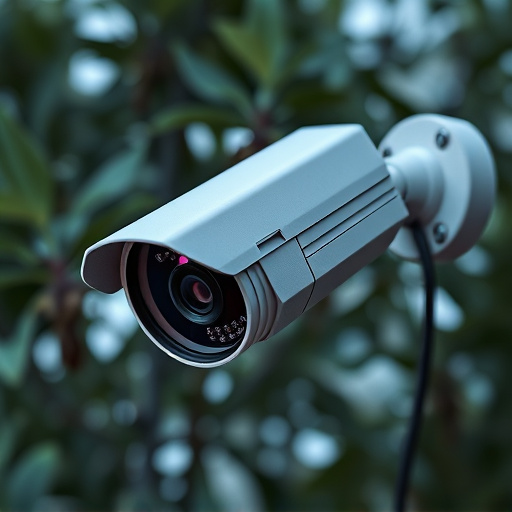The Fake Surveillance Camera Positioning Guide emphasizes strategic placement and lifelike appearance for maximum deterrence. Place cameras in high-visibility areas like entry points and valuable zones to signal surveillance. Combine visible and hidden cameras for balanced security and realism. Regularly maintain and update camera positions, visuals, cleaning, and weatherproofing for ongoing effectiveness.
Convincing decoy cameras have emerged as a powerful tool in the fight against theft. This comprehensive guide, ‘Fake Surveillance Camera Positioning Guide’, explores how strategically placed decoys can significantly deter criminal activity. We delve into the effectiveness of these cameras, offering insights on visible vs. discreet positioning to maximize impact. Learn about targeting high-risk areas and combining real with fake surveillance for unparalleled security. Discover best practices for maintenance and updates to ensure your system remains a formidable deterrent.
- Understanding Decoy Camera Effectiveness
- Choosing Visible vs Discreet Placement
- Strategizing High-Risk Areas for Cameras
- Combining Real and Fake for Maximum Deterrence
- Maintaining and Updating Your Fake Surveillance System
Understanding Decoy Camera Effectiveness
The effectiveness of decoy cameras in preventing theft lies in their strategic placement and realistic appearance. These fake surveillance cameras act as a powerful psychological deterrent, misleading potential thieves into believing they are under constant observation. By following a comprehensive fake surveillance camera positioning guide, businesses can maximize this effect.
Positioning these decoys in highly visible areas, such as near entry points, cash registers, or valuable inventory zones, sends a clear message to criminals. The guide should also consider the use of varied angles and heights to mimic actual camera systems, enhancing the realism and overall impact on deterring theft attempts.
Choosing Visible vs Discreet Placement
When considering placement for decoy cameras, the decision between visible and discreet positioning is key. A fake surveillance camera positioning guide should prioritize strategic visibility to act as an effective deterrent. Mounting cameras in highly noticeable locations like entryways, windows, or well-lit paths sends a clear message to potential thieves: “This area is under surveillance.” This approach can significantly reduce the likelihood of theft attempts.
On the other hand, discreet placement offers a subtle yet powerful option. Cameras hidden from direct view but still strategically positioned can capture incidents without drawing unwanted attention. While less overt, this method still serves as a silent guardian, encouraging cautious behavior among would-be thieves. The goal is to create an environment where individuals feel observed, even if they aren’t aware of every camera’s exact location.
Strategizing High-Risk Areas for Cameras
When strategizing the placement of decoy cameras, also known as fake surveillance cameras, it’s essential to identify high-risk areas within your property or establishment. These are places where theft is more likely to occur, such as entry points, high-value merchandise displays, and back alleys. Positioning these decoys in plain sight can act as a powerful deterrent, as potential thieves will be less inclined to target an area they believe is under constant surveillance.
The Fake Surveillance Camera Positioning Guide recommends placing cameras in strategic locations that mimic real security measures. This could involve mounting them on ceilings or walls near doors and windows, or even integrating them into decorative elements like street lamps or garden ornaments. By following this guide, you can create the illusion of a comprehensive security system, significantly reducing the chances of theft.
Combining Real and Fake for Maximum Deterrence
For maximum deterrent effect, a blend of real and fake surveillance cameras is a strategic approach. Placement is key here, following a comprehensive Fake Surveillance Camera Positioning Guide. Strategically positioning both genuine and simulated cameras creates an ambiguous environment where potential thieves can’t be certain which are authentic, leading to increased caution and reduced risk of theft. This combination sends a powerful message that surveillance is omnipresent, even when it’s not immediately apparent.
Maintaining and Updating Your Fake Surveillance System
To ensure the maximum effectiveness of your decoy camera system, regular maintenance and updates are key. Start by strategically repositioning your fake cameras periodically to mimic real surveillance equipment movement. This dynamic approach not only keeps potential thieves guessing but also increases the system’s longevity.
Additionally, keep the surrounding environment in mind when maintaining your decoy cameras. Update the visual elements—like mounting hardware or cables—to match any changes in your physical space. Regular cleaning and weatherproofing are essential, especially for outdoor units, to prevent damage and maintain a realistic appearance. Remember, a well-maintained fake surveillance system can deter theft attempts more efficiently.
Decoy cameras are a powerful tool in the fight against theft, offering a cost-effective and flexible solution. By combining strategic placement with realistic design, these fake surveillance systems can significantly deter criminals. Whether you opt for visible or discreet positioning, targeting high-risk areas, or a blend of both real and fake cameras, this Fake Surveillance Camera Positioning Guide ensures your assets are protected. Regular maintenance and updates will keep your system effective, making it a valuable asset in any security strategy.
